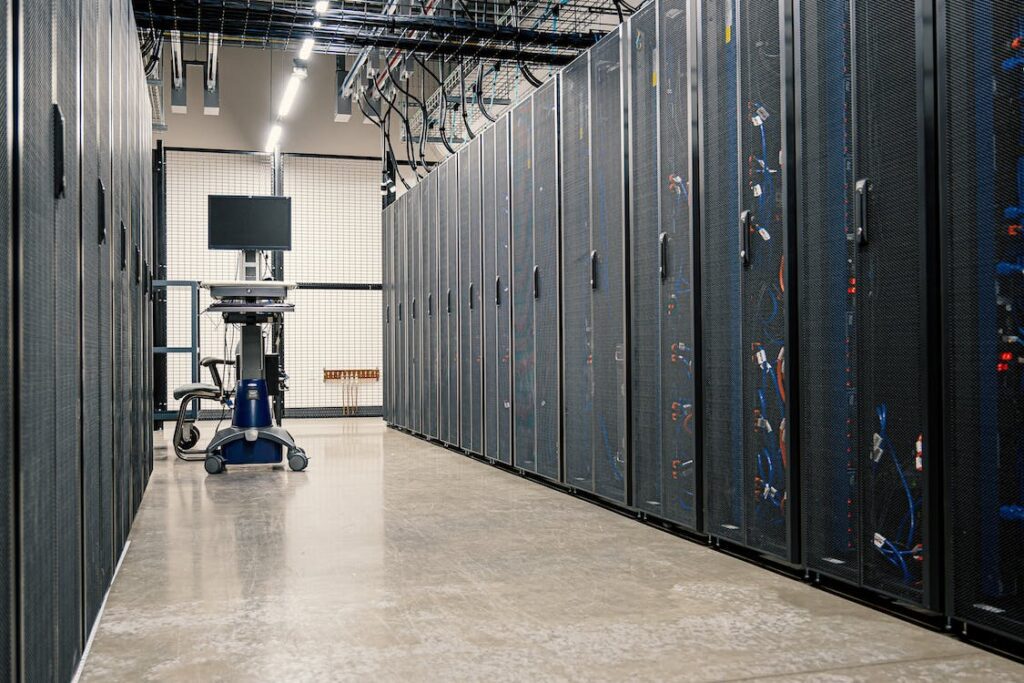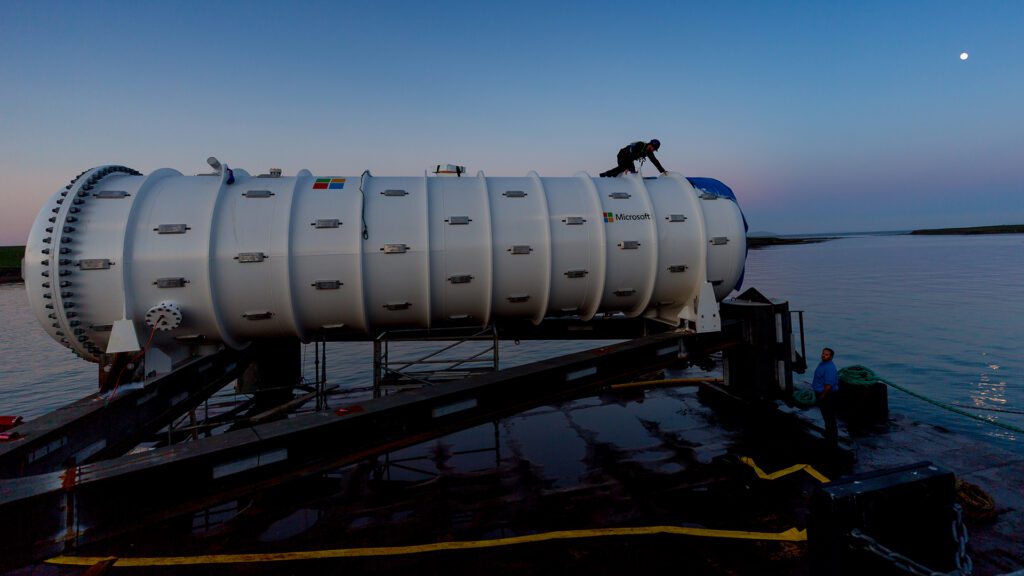Cloud Computing and the Energy Crisis: Is Building More Data Centers Sustainable?

In this post, I want to discuss a topic that is getting an increasing amount of attention in Europe: the impact of cloud computing on the energy sector. This was already a concern before the current energy crisis started, but the power consumption of cloud computing is rarely out of the news now.
First of all, my knowledge of this topic is skewed toward Microsoft’s data centers in Ireland. However, the issue is not restricted to Ireland or Microsoft; everything I’ll be discussing here includes all of the big cloud service providers and their data centers around the world.
The core issue: The power consumption of data centers
Cloud computing requires a lot of power. Did you know that the power consumption of data centers is measured by megawatts? A cloud data center is even bigger and denser, driving huge amounts of storage and power-intensive hardware such as GPUs which are required for graphics, machine learning, high-performance computing, and simulation workloads.
According to Ireland’s Central Statistics Office, data center power consumption in the country is greater than the one from the entirety of rural Ireland. Rural Ireland is approximately 1.8 million people or approximately 35% of the population of the country. Imagine that one industry consumes more power than 35% of the population of an entire country!
The cloud computing industry pays its way
Is that really a problem if the cloud computing industry is paying its fair share of taxation to cover the impact of energy consumption? Unfortunately, this is a rather complex equation.
According to a recent report from consulting firm Baringa, the information and communications technology industry is responsible for 15% of the economy in Ireland. Of that 15%, how much of it is sourced from the cloud?
The Irish subsidiary of Microsoft recorded a profit of €2.6 billion in its 2021 fiscal year. Meanwhile, a recent study from the Center for Corporate Tax Accountability and Research revealed that Microsoft is paying no direct taxes in Ireland by claiming a tax residency in Bermuda.
Some will argue that these data centers announce huge employee counts and those employees are paying taxes – so maybe the big 3 clouds (Microsoft Azure, Amazon Web Services, and Google Cloud Platform) are paying indirect taxes?

When the construction of a new data center build is announced, it usually results in the creation of hundreds of new jobs. Those jobs are short-term contract workers hired to build the data center. However, most of the long-term local employees are lower-paid security and operator staff, while most of the high-skilled workers are already employed in a few globally dispersed locations.
Ultimately, all these data centers need to operate is people to guard the doors and swap out any failed disks. If you want evidence of that, go ahead and use the satellite view in your favorite mapping tool and search for the data centers of the big 3. You will not see many car parking spaces – and the locations are remote enough to preclude the use of public transport.
Anyway, Microsoft (and probably the other big two cloud providers) are using 35% of the power from Ireland while paying no taxes. Is that really fair and sustainable?
The electricity is paid for
Let’s say that company X consumes Y megawatts from the grid. All is legal and cool if they pay for those Y megawatts.
As winter descended upon us last year, the company that runs the national grid in Ireland was constantly in the news, warning us that blackouts were a possibility because of the increased power consumption during that time of year. Recently, we have been told to avoid using electricity between 5 PM and 8 PM… which is when you usually cook dinner or do your laundry after a day of work.
Microsoft has since realized that it cannot get enough electricity from Ireland’s grid. The Business Post reported in December that Microsoft was planning to build a €900 million diesel-powered power station in Dublin producing 170 megawatts to power their “North Europe” region of data centers for Azure, Microsoft 365, and other cloud services.
The impact of cloud computing on power consumption in Ireland has led Eirgrid, the national electric power transmission operator to issue a moratorium on data center builds in the greater Dublin region until at least 2028. However, 21 new data centers are already planned outside the city according to The Business Post.
The impact of renewable energy
This isn’t the place to discuss whether climate change is artificial, natural, or a woke attack on orange ex-presidents. However, the truth is that supplies of carbon-based fuels are finite and costs have sky-rocketed following the invasion of Ukraine by Russia. Renewable energy must play a larger role in providing more power to countries around the world.
Amazon, Microsoft, and Google are snapping up the entire production of renewable power farms as they are built. These power farms are installations that take up swathes of land, and they probably received planning permission on the premise that they would power a certain number of homes. However, instead of powering the homes of tax-paying citizens, these power farms are sending all of the electricity they produce straight to the biggest cloud computing providers.
In 2017, Microsoft signed a 15-year exclusive contract with General Electric to consume power from a wind farm in the southwest of Ireland – 15 years of production that could have reduced the carbon footprint of domestic users and businesses that pay taxes in Ireland. Last November, the Redmond giant also signed an agreement to switch to 100% renewable power by 2030 in Ireland, creating further competition against citizens and businesses paying Irish taxes for power resources that still have not been built.
Isn’t the cloud green already?
There is an argument that migrating workloads to the cloud will reduce power consumption, and therefore, pressure on a national grid. However, it’s hard to verify that in practice.
I’m not so sure that the levels of density in an Azure data center are impressive. In the early days of Azure with just A-Series virtual machines (remember – all Platform as a Service offerings hide a virtual machine under the covers), there were only a handful of machines per physical host. Meanwhile, those of us using on-premises Hyper-V or VMware were getting much higher levels of VM density.
Cloud regions are like gravity wells, sucking compute and storage into central locations. For example, the Microsoft West Europe region in the northwest Netherlands is providing compute and storage for customers in many countries all over Europe. The power grids for those customers are under less pressure, but the power grid in the Netherlands is put under more pressure.
Sea-powered cloud
You might remember Microsoft’s Project Natick, an experiment to run a mini-cloud data center in a deep sea tank. Uninformed persons might assume that Project Natick has inspired a broad industry change – no it has not. This was an interesting project, but there are many obstacles that I (not a deep sea expert) can think of.

The submersible tank in the photos and video was tiny. How many of those tanks would be required to replace a building that is hundreds of meters long? And that’s assuming that these tanks are even feasible:
- Won’t there be huge protests against a data center installation that will replace precious sea floor life with concrete beds?
- Placement in international waters will be too complex and expensive, not to mention the threat of an unfriendly nation tapping wires inside the cloud network.
- The cost of the tanks will be crazy – underwater data centers would need to be highly resilient to survive years without needing to be raised to be repaired. And what happens if one of those things leaks and the customer hasn’t used availability zones?
Ultimately, sea-located data centers are a nice story, but they seem to be far from practical.
Using data centers as power generators
An Amazon data center in Dublin, which was once a biscuit factory that teased my olfactory senses as a child, is set to use its excess heat to warm an educational facility, government buildings, and 133 apartments. At first sight, this seems like a nice feel-good story, but sit back and think for a moment: How much power is this data center consuming? Now, compare that to the power required to heat 133 homes, a school, and an office building for 6-8 months per year.
Microsoft recently announced a plan to become a UPS for the national grid. The concept is that a cloud data center has huge amounts of battery power. Should a national grid be reaching low levels of supply capacity, if a data center is in a healthy state, it could output power to the grid to power other businesses and homes.
One could see this as the data center acting as a battery for the grid. For example, Ireland’s renewable energy sources are heavily skewed towards wind power, which is not reliable. Wind farms could charge the battery (the data center) and if the wind stops blowing, the battery could feed consumers. This is an interesting concept, but it will be necessary to see how it might work out.
Conclusion
It’s clear by my career choice (I’m a cloud consultant) that I’m in favor of cloud computing. However, I think there needs to be a reasonable conversation about how the cloud consumes power from a country and provides a contribution back to that country.
This isn’t to be mistaken with what some call “socialism”, it’s a hard reality that these companies are making huge impacts on economies and are not contributing back to those economies, breaking some of the concepts of capitalism. Technology innovation is interesting, but precious and expensive power is being devoured by cloud data centers in small areas, and something needs to be done to balance the equation.



